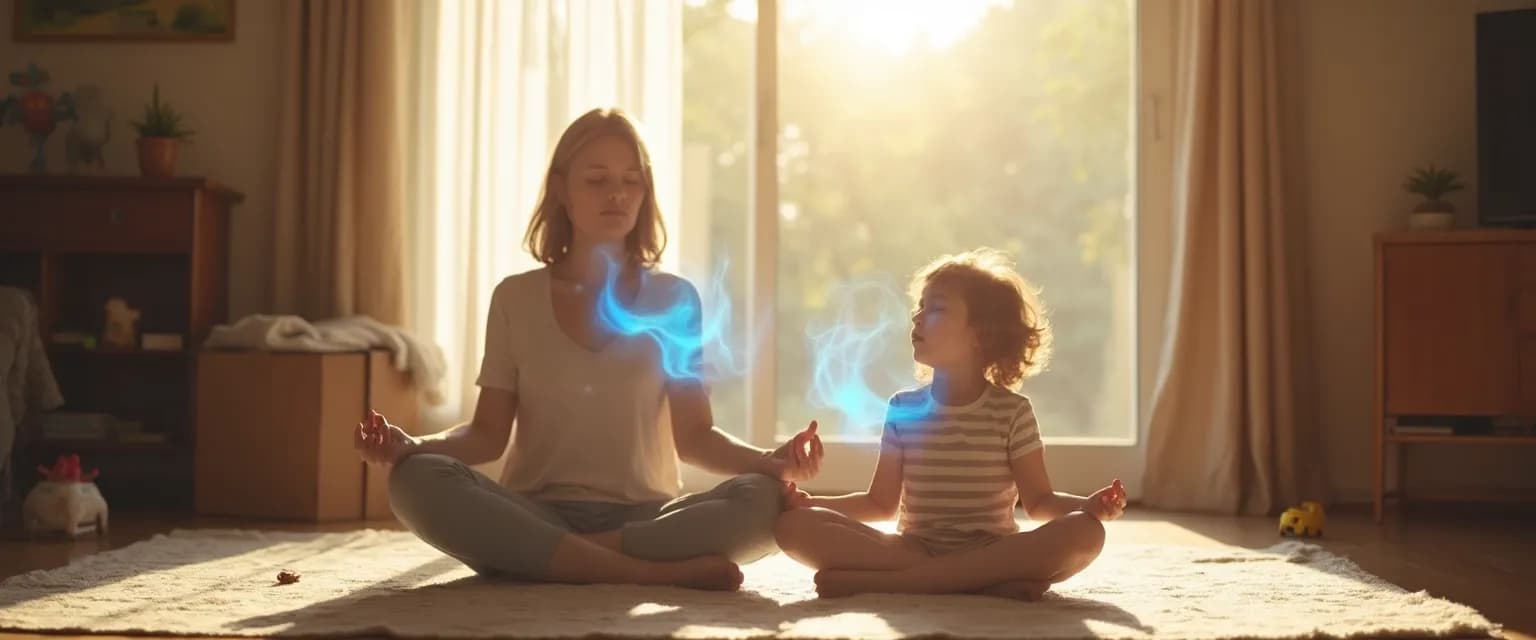Mindful Breathing for Parents: Calm Techniques for Chaotic Family Moments
Parenting can feel like an emotional rollercoaster—one minute you're enjoying sweet cuddles, and the next you're managing a full-blown meltdown in the cereal aisle. These high-stress moments often trigger our fight-or-flight response, leaving us feeling frustrated and overwhelmed. Mindful breathing offers a powerful yet simple tool that creates space between emotional triggers and our reactions. This practical approach to emotional regulation works because it activates your parasympathetic nervous system—essentially hitting the "calm" button in your brain when chaos erupts around you.
The science is clear: when we take slow, deliberate breaths, we reduce stress hormones like cortisol and increase oxygen flow to the brain. This physiological shift helps parents respond thoughtfully rather than react impulsively during challenging moments. The beauty of mindful breathing techniques is that they require no special equipment and can be practiced anywhere—whether you're dealing with morning madness or bedtime battles.
Unlike many parenting strategies that demand time you don't have, mindful breathing integrates seamlessly into your existing routine. These techniques provide immediate relief during stressful family situations while building your long-term emotional resilience. Let's explore how to incorporate these practical breathing exercises into your daily parenting life.
Quick Mindful Breathing Techniques for Parenting Pressure Points
Every parent recognizes those predictably chaotic moments in the day—morning rushes, homework struggles, and bedtime resistance. Having specific mindful breathing exercises ready for these pressure points can transform how you navigate them.
Morning Rush Reset Breath
When the morning frenzy hits and everyone's running late, try this 30-second technique: Place one hand on your chest, the other on your belly, and take three breaths where you count to four as you inhale and six as you exhale. This 4-6 pattern activates your body's relaxation response, even as you're packing lunches or hunting for missing shoes.
The effectiveness of this technique comes from extending your exhale, which signals to your nervous system that you're safe despite the chaos. Parents report feeling more centered and less reactive after just three breath cycles—exactly what's needed when facing morning resistance.
Mealtime Breathing Reset
When food battles erupt, try the "stealth breath"—a subtle but effective mindful breathing approach that won't draw attention. Take a sip of water, then breathe in for three counts and out for five while maintaining conversation. This anxiety management technique allows you to regulate your emotions without disrupting the meal flow.
For after-school transitions when emotions run high, the "shoulder drop breath" works wonders. As you inhale through your nose, raise your shoulders toward your ears; as you exhale through your mouth, drop them completely. This physical release paired with mindful breathing helps discharge tension that builds throughout the day.
When facing a child's meltdown, the "pause and breathe" technique creates crucial space before responding. Take one deep breath while silently counting to three, then respond. This tiny gap allows you to access your rational brain rather than matching your child's emotional state.
Teaching Mindful Breathing to Your Family
The real magic happens when mindful breathing becomes a family practice rather than just a parental coping mechanism. Children naturally mimic what they see, making your consistent practice the most powerful teaching tool.
For young children (ages 3-6), try the "balloon breath"—have them place hands on their belly and imagine inflating a balloon as they inhale and deflating it as they exhale. This visual makes the abstract concept of breathing tangible and fun. For older children, the "five-finger breath" works well—they trace up each finger while inhaling and down while exhaling, completing a full hand for five mindful breaths.
Creating family breathing rituals at transition points builds micro-habits that serve everyone. Before leaving for school, take three breaths together. Before dinner, pause for a collective deep breath. These small practices establish a culture where pausing to breathe becomes second nature.
When conflicts arise, modeling mindful breathing shows children a healthy way to process emotions. Simply saying, "I need to take a breath" demonstrates emotional regulation in action. Over time, you might notice your children spontaneously using these techniques during their own challenging moments.
Remember that mindful breathing isn't about perfect parenting—it's about creating space between triggers and responses. Even implementing these techniques occasionally benefits your family's emotional climate. Start with just one situation where you consistently use mindful breathing, then gradually expand to other pressure points as the practice becomes natural. These small moments of mindful breathing create lasting changes in how your family navigates life's inevitable challenges together.




